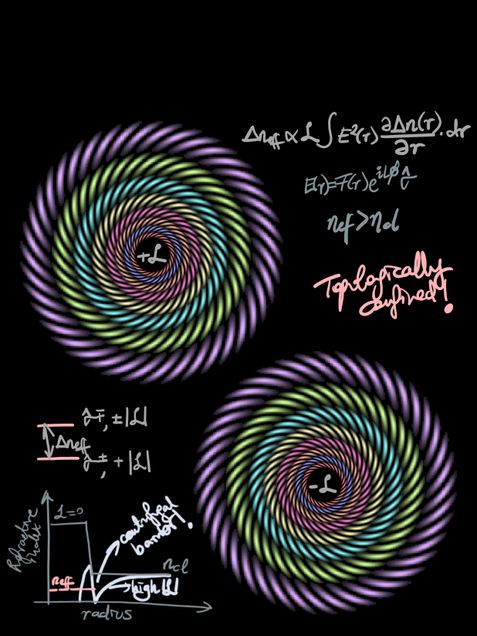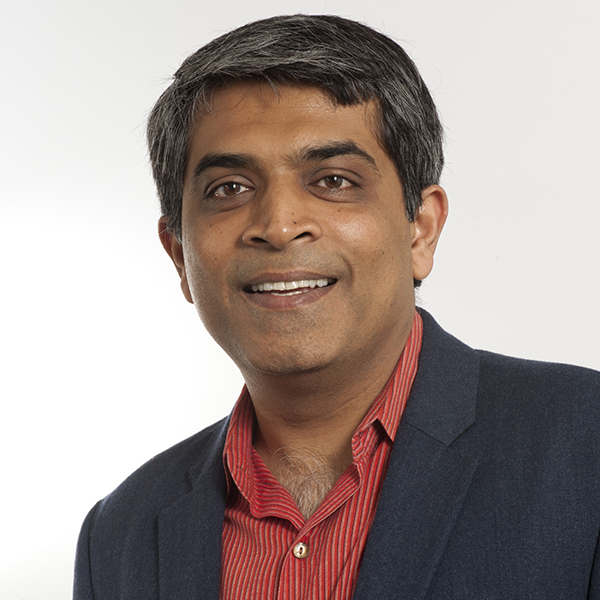The Sky’s the Limit: Ramachandran Team’s Light Transmission Discovery Published by Science
Header image credits: Zelin Ma; Background photo is the copyrighted property of INMAGINE Limited, its Contributors or Licensed Partners and is being used with permission under license.
by A.J. Kleber and Millie Zhu
Have you ever idly logged into your social media accounts over breakfast, only to be overwhelmed by the sheer number of posts clogging up your feed? So many people sharing a nearly endless stream of articles, memes, personal anecdotes and yes, even essential information. It’s hard to take it all in–and not just for our minds.
It’s undeniable that the amount of data people are generating in digital spaces is constantly, exponentially growing. We tend to think of information as ephemeral, hovering insubstantially in “the cloud,” but in reality there are physical limits to how our data is stored and transmitted, and this continual increase in content is beginning to pose a challenge to the optical fibers that form the infrastructure through which it travels.

Optical fibers are the backbone of long-distance data transmission, whether that’s taking place between quantum-computing nodes, between servers in a data center, or across the worldwide internet. The information is sent in the form of beams of light, which can be maintained and relayed over globe-spanning distances using a phenomenon called “total internal reflection,” which allows light to bounce off the walls of a fiber “light pipe” with minimal loss. However, the capacity of a given optical fiber is limited–a limit our expanding data generation threatens to exceed. Fresh solutions are needed, which is where Professor Siddharth Ramachandran and ECE PhD candidate Zelin Ma come in.
In a new paper published in Science, Ma and Ramachandran, along with industry collaborator Poul Kristensen of OFS Optics, demonstrate their groundbreaking solution–one which not only cracks the problem of the upcoming capacity crunch, but may also yield a more energy-efficient means of signal transmission.
One existing approach to alleviating capacity crunch involves configuring an optical fiber to support several separate data channels. Light travels down these channels in spatially distinct patterns, each of which carries as much data as a single standard fiber. Ramachandran and his team had previously played a pivotal role in the development of this concept, demonstrating its viability in a publication in Science in June 2013. Ramachandran compares this method to “expanding the number of lanes in a highway” to allow for increased traffic. Unfortunately, this tends to lead to “crashes”– information leaking between channels. This leakage corrupts every channel within the fiber, thereby rendering information transmitted in all channels irretrievable–making this method a stopgap at best, not an effective solution.
Instead of thinking in terms of cars and roads, Ramachandran suggests a more celestial framework.
“High-topological charge light beams” behave differently from the standard beams used in optical communications today; instead of moving in a straight line, they twist as they travel, generating a “centrifugal barrier” similar to those created by the rotation of binary stars. Just as centrifugal barriers protect such stars from crashing into one another through the sheer force of their respective gravity, they can also operate to keep these unusual light beams contained within an optical fiber over significant distances. These twisted beams do not require total internal reflection, previously thought to be necessary for transmitting light, to remain confined to the optical fiber. This peculiar effect, dubbed “topological confinement” by the authors, also makes high-topological charge light beams significantly more robust than conventional beams. They’re able to contain many more data channels without that pesky leakage problem.
As laid out in their paper, Ramachandran’s team has successfully demonstrated their new method by packing as many as 50 data channels into a single 1-kilometer optical fiber; 25 times the capacity of conventional fibers. They theorize that this improvement is only the beginning–and if their approach is as scalable as they suspect, it could have a truly global impact.

First author Zelin Ma recently defended his doctoral dissertation, “Light Transport by Topological Confinement,” based on the same research. After wrapping up some studies that extend this research, he aims to consider industrial or academic positions in related areas in the fields of classical or quantum communications. Ma’s advisor and corresponding author, Distinguished Professor of Engineering Siddharth Ramachandran, directs the High Dimensional Photonics Lab at Boston University. His research centers on nonlinear, ultrafast and quantum photonics, fibers and guided-wave devices, brain imaging, and classical and quantum networks.
